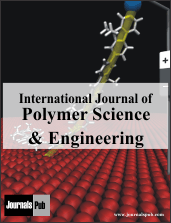
Keka Rana,

Debasish Sarkar,
- Assistant Professor Haldia Institute of Technology Haldia India
- Assistant Professor Haldia Institute of Technology Haldia India
Abstract
Historically Crossflow Membrane modules came first in the membrane-based separation (MBS) process. Its high shear generation overcomes two non-idealities concentration polarization and subsequent fouling. Primarily, high shear generation and large surface area create a positive domain for large applications. Thereafter, feed flow rate-dependent shear generation creates a hindrance. This obstruction is overcome with Dynamic Shear Enhanced Membrane Filtration Pilot (DSEMFPs). Low surface area is a vital drawback of DSEMFPs. This radial flow membrane module with its special design develops a large surface area. Moreover, its central inlet and nine peripheral outlets reduce the large pressure drop efficiently. With all the positive properties it efficiently removes the protein from waste water. Moreover, it can work satisfactorily on plenty of wastewater treatment processes. Therefore, a detailed hydrodynamic study of the radial flow module is the primary requirement. The absence of it makes a prominent path for further investigation. Considering the importance of shear, shear stress distribution on the membrane surface is studied here. Moreover, exact velocity vector distribution in the default interior is also vital to understanding the inner hydrodynamic relationship. Additionally, vortices, turbulent kinetic energy, turbulent KE dissipation rate, and dynamic pressure on the membrane surface are also reported in this study for a complete understanding of the exact condition of the membrane surface. All these results justify the positive impact of the Radial flow system in wastewater treatment.
Keywords: Cross flow module, Radial flow, Concentration polarization, Fouling, Waste water treatment, Membrane-based separation (MBS).
References
[1] Gul B Y, Pekgenc E, Vatanpour V, Koyuncu I. 2023. A review of cellulose-based derivatives polymers in fabrication of gas separation membranes: Recent developments and challenges. Carbohydrate Polymers. 321:121296. https://doi.org/10.1016/j.carbpol.2023.121296.
[2] Sarkar D, Chakraborty D, Naskar M, Bhattacharjee C. 2014. Characterization and modeling of radial flow membrane (RFM) module in ultrafiltration. Desalination. 354:76–86. https://doi.org/10.1016/j.desal.2014.09.020.
[3] Sarkar A, Moulik S, Sarkar D, Roy A, Bhattacharjee C. 2012a. Performance characterization and CFD analysis of a novel shear enhanced membrane module in ultrafiltration of Bovine Serum Albumin (BSA). Desalination. 292:53–63. doi: 10.1016/j.desal.2012.02.009.
[4] Sarkar D, Sarkar A, Roy A, Bhattacharjee C. 2012b. Performance Characterization and design evaluation of Spinning Basket Membrane (SBM) module using Computational Fluid Dynamics (CFD). Sep. Puri. Technol. 94:23–33. https://doi.org/10.1016/j.seppur.2012.03.034.
[5] Cai J J, Hawboldt K, Abdi M A. 2016. Analysis of the effect of module design on gas absorption in cross flow hollow membrane contactors via Computational Fluid Dynamics (CFD) analysis. J. Membr. Sci.520:415-424. https://doi.org/10.1016/j.memsci.2016.07.054.
[6] Salama A. 2020. Investigation of the onset of the breakup of a permeating oil droplet at a membrane surface in crossflow filtration: A new model and CFD verification. Int. J. Multiph. Flow. 126:103255. https://doi.org/10.1016/j.ijmultiphaseflow.2020.103255.
[7] Landázuri A C, Sáez A E, Anthony T R. 2016. Three-dimensional computational fluid dynamics modeling of particle uptake by an occupational air sampler using manually-scaled and adaptive grids. J. Aerosol Sci. 95:54–66. 10.1016/j.jaerosci.2016.01.004.
[8] Launder B E, Spalding D B. 1974. The numerical computation of turbulent flows. Comput. Methods Appl. Mech. Eng. 3 (2):269–289.
[9] Shih T H, Liou W W, Shabbir A, Yang Z, Zhu J. 1995. A new k-e (eddy-viscosity) model for high Reynolds number turbulent flows-model development and validation. Comput. Fluids 24 (3):227–238.
[10] Naskar M, Rana K, Chatterjee D, Dhara T, Sultana R, Sarkar D. 2019. Design, performance characterization and hydrodynamic modeling of intermeshed spinning basket membrane (ISBM) module. Chem. Eng. Sci. 206:446–462. https://doi.org/10.1016/j.ces.2019.05.049.

International Journal of Polymer Science & Engineering
| Volume | |
| Received | February 7, 2024 |
| Accepted | May 17, 2024 |
| Published | June 11, 2024 |

